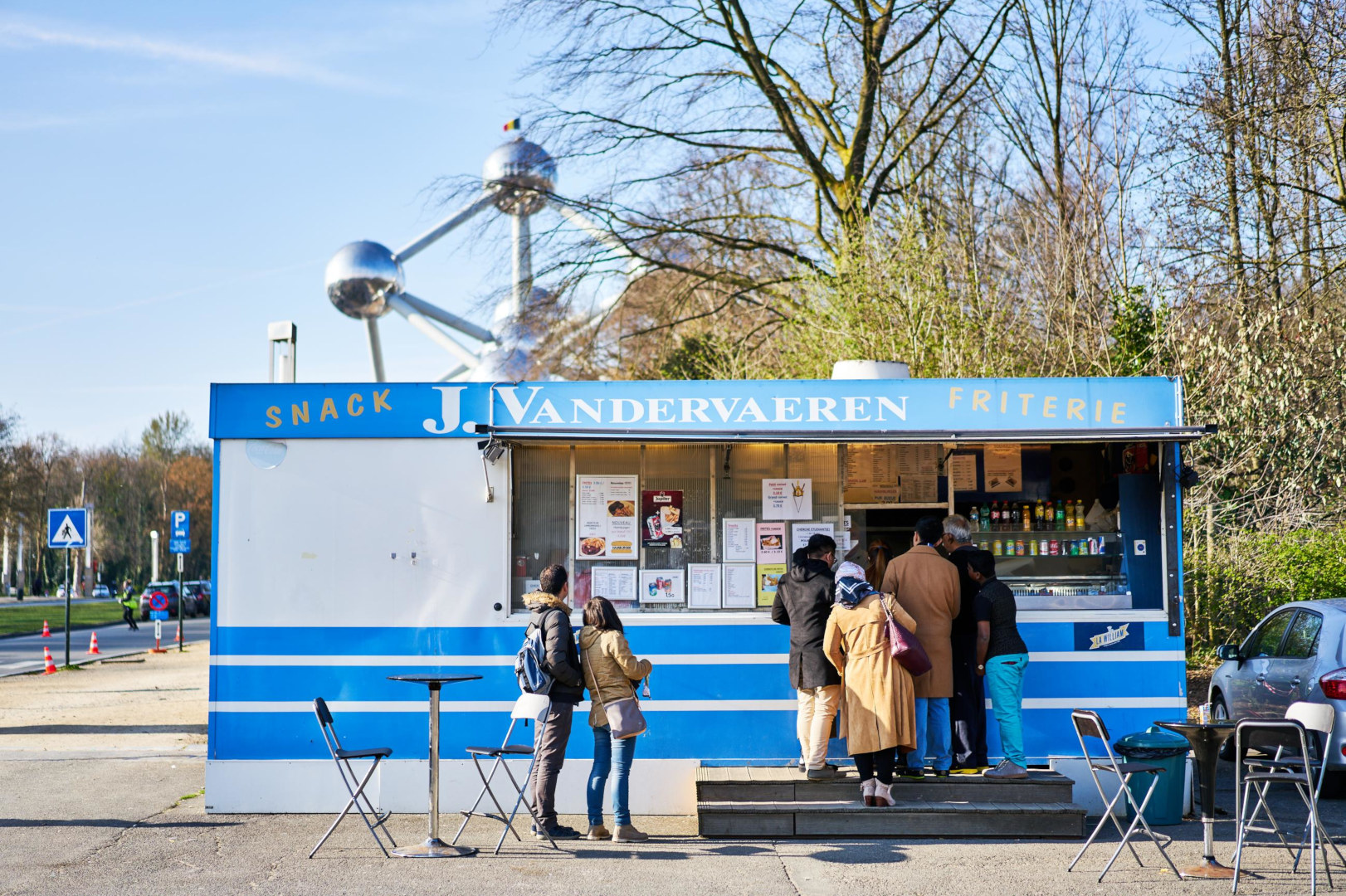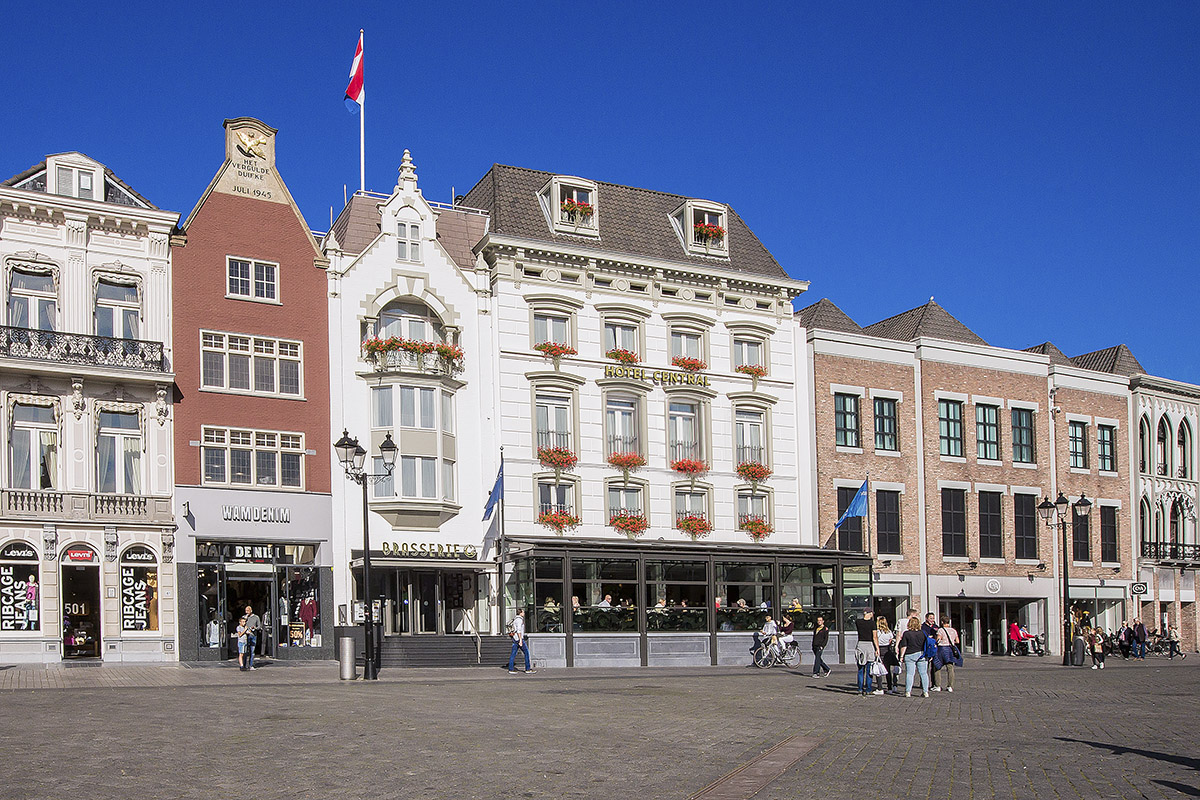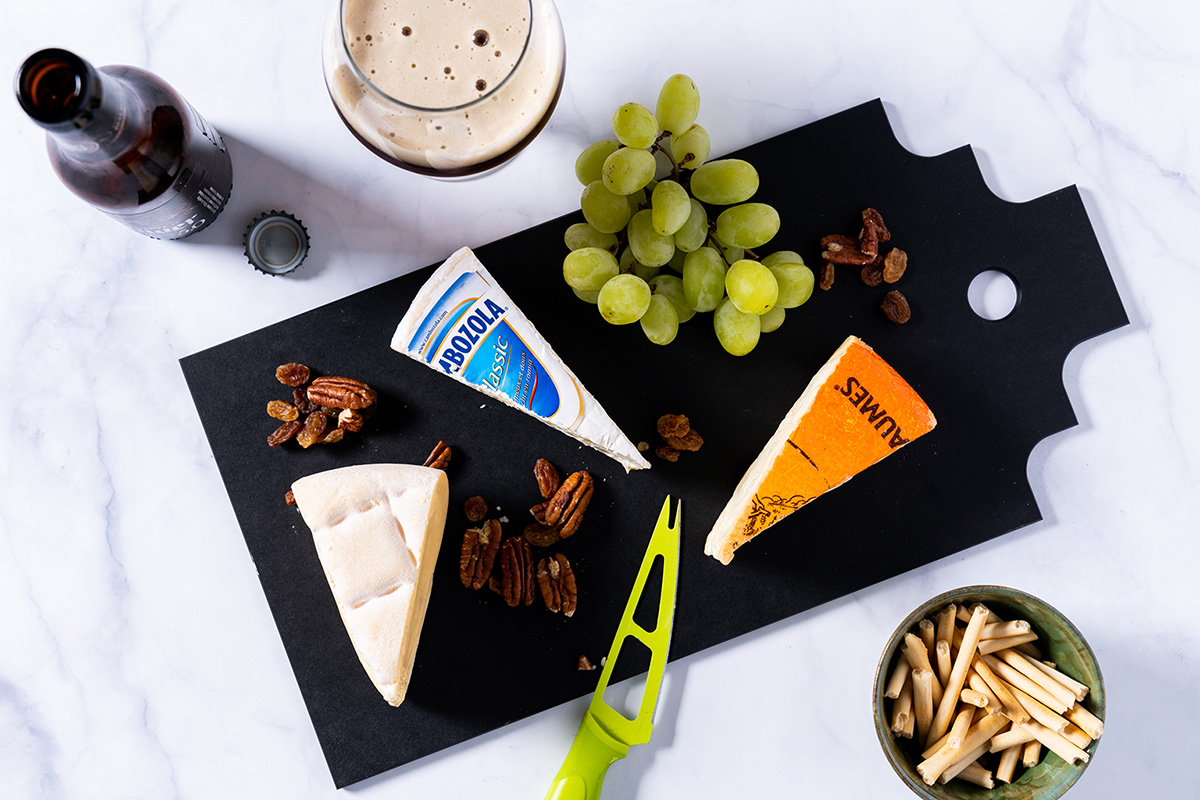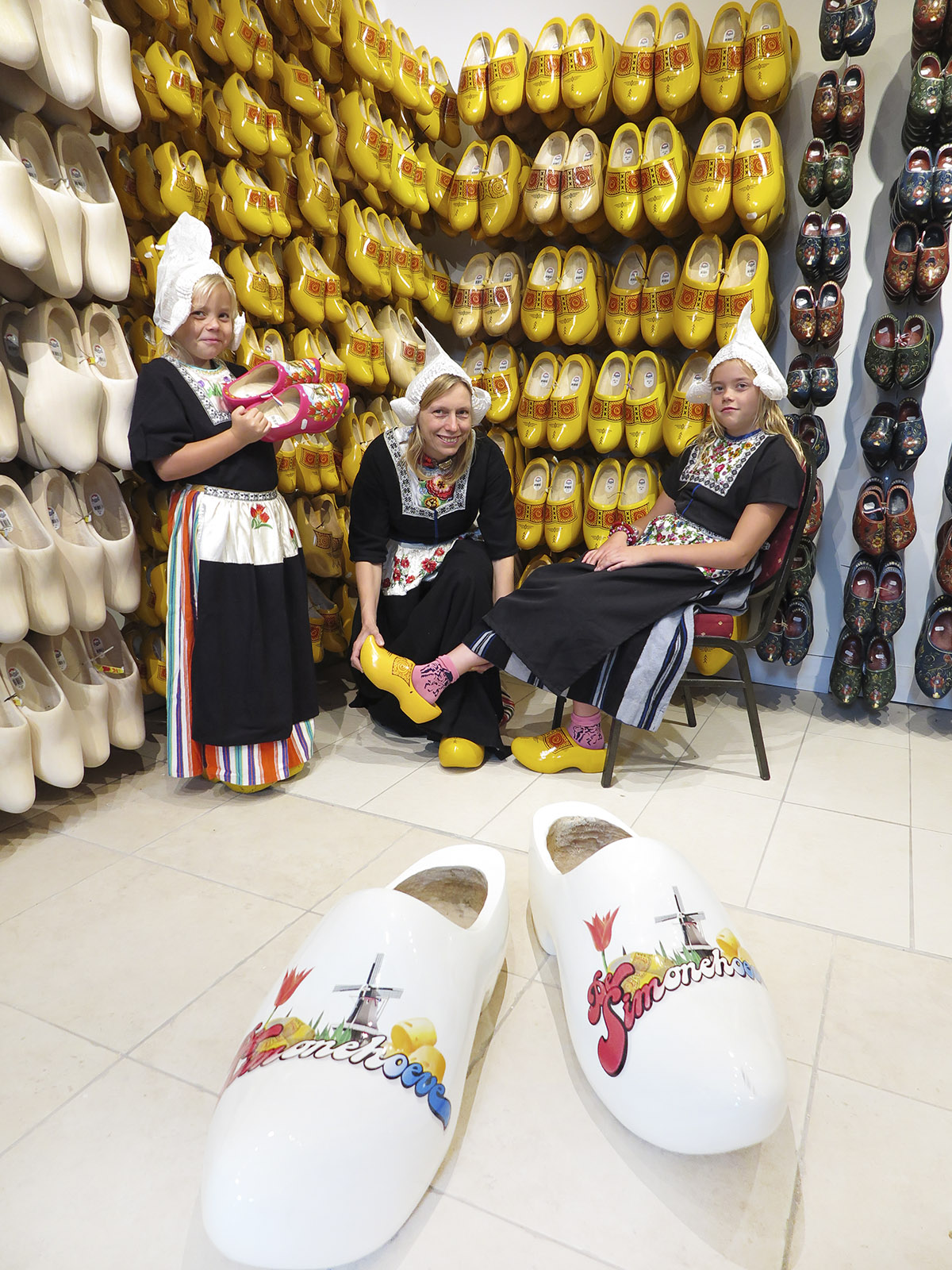Roadside gastronomy

When on a packed city trip or business getaway, there isn’t always time to sit down for a lengthy meal. Instead, we often opt for a quick bite on the go. But that does not have to mean you must miss out on local specialities. The Benelux cuisine offers a myriad of tasty traditional food at booths and take-away restaurants; hot and cold, sweet and savoury.
Poffertjes
The Dutch are masters in the art of baking pancakes. In the many pancake houses of the country, they surprise you with both sweet and savoury pancakes. Yet, most typical are their ‘poffertjes’. These tiny, airy pancakes have yeast in them, letting them rise like real cakes. Usually, they serve you 12 of them with a bit of butter and some powdered sugar on top. As to the roots of the dish, we can only guess. Rumour has it that it was discovered in a monastery. Other stories say that it was originally French and only got introduced in the Netherlands by Napoleon’s troops. Regardless of its origins, poffertjes are as Dutch as they come today, and a must-eat on your trip to the Netherlands.

Photo: Tijs Zwinkels
Waffles
If one product puts Belgium on the culinary map, it must be the waffle. The griddled treat is popular in most corners of the country and comes in many varieties. To eat them all, a little road trip might be in order. The city of Brussels is the best place to start your journey as it is the home of the famous Brussels waffle; an airy, crispy and perfectly rectangular confection. This sizeable waffle doesn’t ask for any toppings, just a whiff of powder sugar at the most. The second stop on your trip will be the city of Liège. Their waffles are by far the most popular ones and are sold in shops all over the country. They are heavier than their Brussels’ counterparts and have rounded corners. On top of these waffles, vendors put toppings galore. From chocolate and whipped cream to fruit and sweets. All these options are usually on display, creating colourful and mouth-watering shopfronts as if from Willy Wonka’s hand himself. Those who still crave waffles afterwards can continue their road trip to Bruges for the Flemish waffle, and to the far north of Flanders for the ‘Kempense galetten’.

Liège waffle. Photo: Pieter D’hoop – Visit.Flanders
Soused herring and kibbeling
While living a stone’s throw from the North Sea, the Dutch sure know how to prepare the ocean’s delicacies. Even on street-food menus, fish is a popular ingredient. Most iconic is their soused herring, a delight which is only sold from May till September. During this period, young herrings are caught and marinated in acid after which they are eaten raw with chopped onion. Cutlery is not required for this treat. You just grab the fish by its tail and let it slide vertically into your mouth. If you prefer a cooked fish over a raw one, you might be up for ‘kibbeling’ instead: deep-fried, battered cod fish with a fresh tartar sauce. The snack stems from the 19th century when food was scarce. Back then, they fried the cheeks and other inferior pieces of the fish to make them edible. Although kibbeling and soused herring are sold in many snack bars these days, the ideal place to eat them is at a local event or fair. On popular occasions like these, you are never far removed from a fishy treat.

Soused herring. Photo: NBTC
Kapsalon
We admit it: when on the hunt for typical Dutch delicacies, the local kebab stand is not the first place we normally look. Yet, that is exactly where you can find a ‘kapsalon’ (or: hairdresser’s). This comprises fries and shawarma with grilled cheese and lettuce on top. The bizarre combination was created in 2003 in a kebab shop in Rotterdam. A local hairdresser came to the restaurant on a regular basis for a self-created dish with all his favourite ingredients. After a while, the owner decided to add the dish to his menu and called it kapsalon, as an ode to the person who came up with it. It became an instant success and was copied by many other kebab places in no time. Today, almost all Middle Eastern takeaways in the Netherlands and Belgium have it on their menu. It is especially popular at night when partygoers head back home. With around 1,800 calories in one portion, it is the perfect weapon the fight an upcoming hangover.

Kapsalon
Snack wall
The Dutch put the ‘fast’ in ‘fast food’. To avoid queues at the snack bar, they get their hot bites from vending machines. Behind tiny glass doors, steaming snacks await you. When you put a coin in, the door unlocks so you can grab your delicious treat. The most popular snack in this so-called snack wall is the meat croquette: a typical Dutch croquette of beef ragout wrapped in a crunchy crust. Very similar to this are the ‘bitterballen’, small balls stuffed with the same ragout. Usually, you can also buy sausages, chicken snacks and vegetarian croquettes filled with Asian bakmi noodles. Despite its popularity in the low countries, the concept of buying lunch from a vending machine didn’t originate on Dutch soil. It was invented in Germany during the 1950s, after which it became wildly popular in all of Western Europe and the United States. Halfway through the 1960s, however, the popularity of the technology decreased after which the machines disappeared from the streets in most countries. But not in the Netherlands — he Dutch still love to ‘pull a croquette out of the wall’ to take the edge off their appetite.

Meat croquette. Photo: Kroketterij De Bourgondiër
Rookworst
A bun, a sausage and a royal serving of sauce. It is the simple recipe of regional specialities all around the globe, from the German bratwurst to the American hot dog. The Dutch are no exception to that, yet, they put a traditional ‘rookworst’ between their bun. This local sausage gets its characteristic taste from the time it spends in a smoking chamber. Its immense popularity in the Netherlands and abroad, is thanks to the famous chain Hema. They have been selling the sausage for almost a century and made it a symbol of Dutch culture. The simple snack consists of a sausage, a bun and a bit of mustard. For convenience, the rookworst that is used for these hot dogs is shaped like a regular frankfurter. A traditional one, however, is thicker and U-shaped, with the two ends tied together by a string. These are usually eaten as part of a more nourishing meal, with fermented cabbage or kale.

Photo: pxhere.com
How to order Belgian Fries?
A trip to Belgium is not complete without a stop at a typical ‘friterie’. The country’s fries are famous around the globe and come with an entire ordering ritual — which sauce should you pick, and what should you eat on the side? Let us take you behind the counter of a Belgian friterie.
Belgian fries are, in many families, a traditional dish to eat on Friday evenings. Some fry them at home themselves, others go to one of the country’s 5,000 friteries. Normally, Belgians fry their golden delicacy in animal fat, giving the potatoes a unique aftertaste. Today, however, most friteries opt for vegetable oil instead. This is cheaper and healthier. Yet, many Belgian fry fanatics still stick with the original animal-based recipe.

Photo: De Fritbox, Booischot
Must there be salt?
After having ordered your fries, the question “Should we put salt on them?” will follow. According to Belgian traditions, the only right answer to that is a wholehearted “yes”. Putting salt does, however, have one big disadvantage for those taking their fries home. The salt distracts the water from the chips, making them lose their crunchiness. So, chances are that you will arrive home with mushy fries. If you eat them straight away, on the other hand, the salt won’t have the time to affect your crunchy meal.
Any meat?
When in a friterie, the dazzling offer of different snacks can be a bit intimidating. In general, the assortment of snacks offered is a mix of different meaty, fishy and vegetarian side dishes. Since almost all of them are breaded it might, however, be hard to pinpoint which is which. A safe choice for many is the ‘frikandel’, a tasty and smooth sausage. Even more traditional is Flemish stew. This traditional Belgian dish has been around for centuries and perfectly complements a hornet bag of fries.
Do you want sauce?
The Belgian sauce culture is very extensive. Of course, you cannot go wrong with mayonnaise, since Belgians have paired this with fries for centuries. Yet, if you want something more special, a myriad of sauces await. Tartar sauce works well with a fishy snack on the side and ‘andalouse’ sauce gives that extra bit of spice to your fries. Yet, if you want it to be very special, you just have to ask for it! If you order a ‘special’ portion of fries, they will add ketchup, mayonnaise and chopped onions on top of it. They also do this with snacks, by the way. So, feel free to ask for a special frikandel as well.
The most popular sauces
1. Mayonnaise
2. Special sauce
3. Warm meat gravy
4. Tartar sauce
5. Andalouse sauce
The most popular snacks
1. A frikandel
2. A hamburger
3. A satay
4. A meatball
5. Flemish stew
TEXT: ARNE ADRIAENSSENS
Subscribe to Our Newsletter
Receive our monthly newsletter by email




